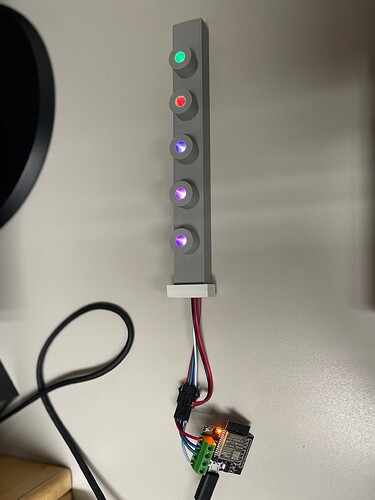It’s been awhile but here is an update
I did end up buying a 3D printer which was it’s own whole world of distractions.
Either way I finally got around to building my workable prototype. PixelBlaze is great and I’m loving the quality. I have a tiny bit of coding experience but nothing amazing. I would love even a little bit of direction towards creating a very subtle “twinkle” pattern with mostly white, a bit of yellow white, and small amount of light blue leds. I’ll keep playing around.
Here is the design. I’ll heat shrink and do proper wiring so I can just plug in the star panels while installing
